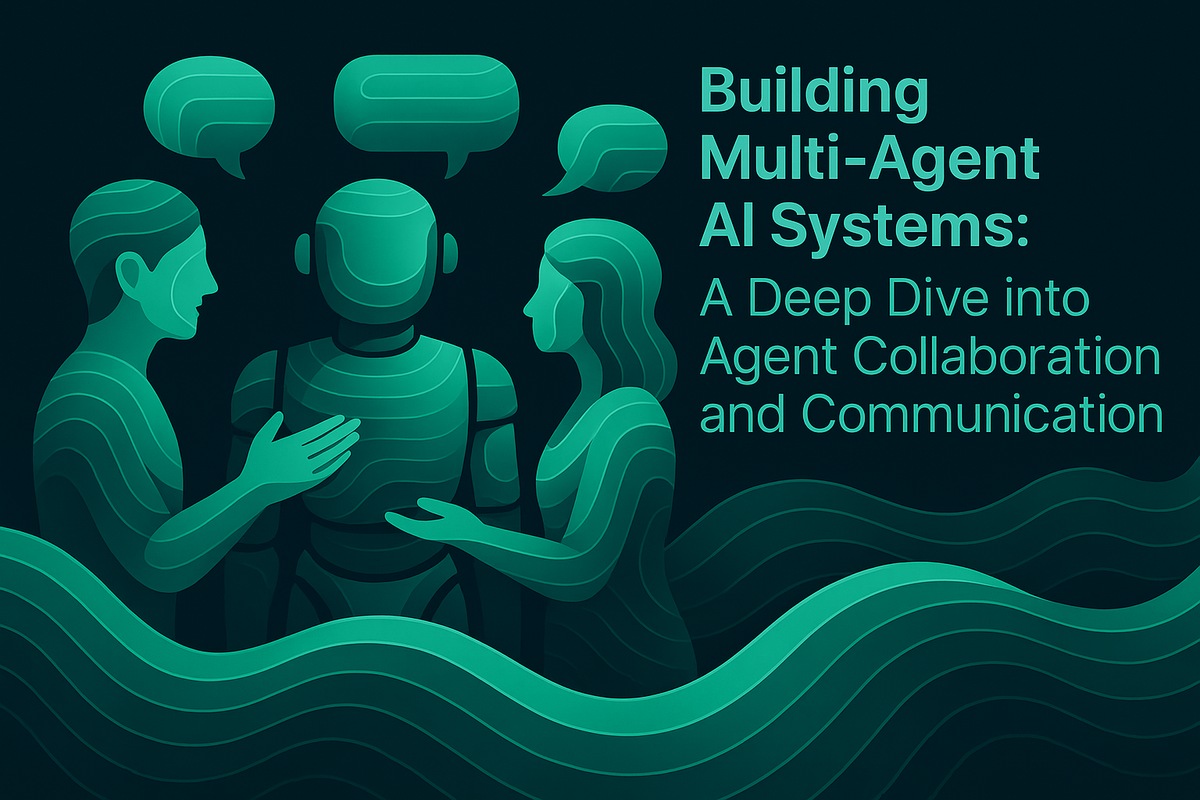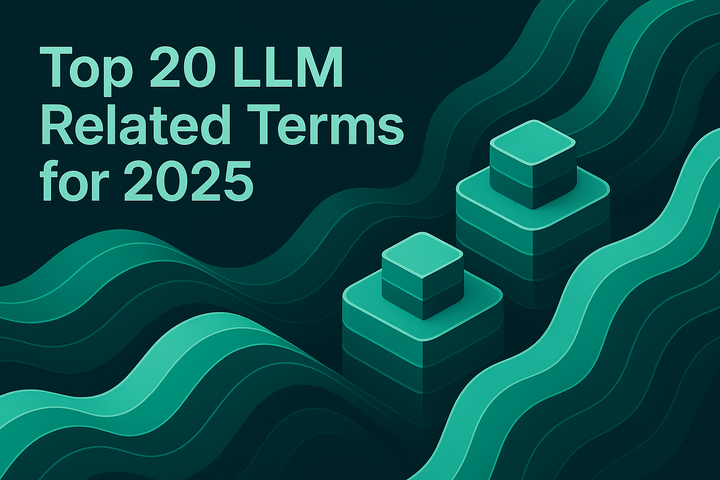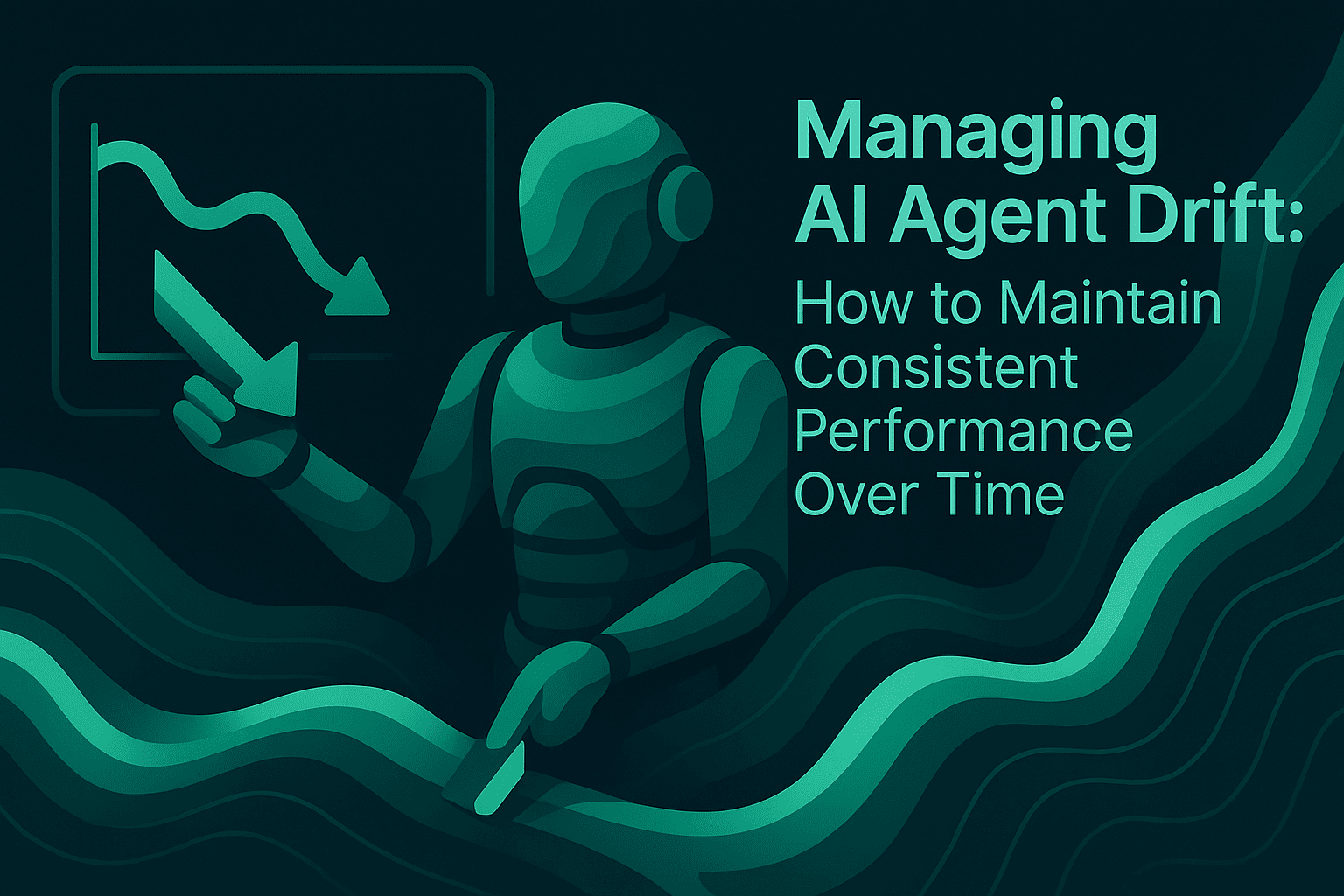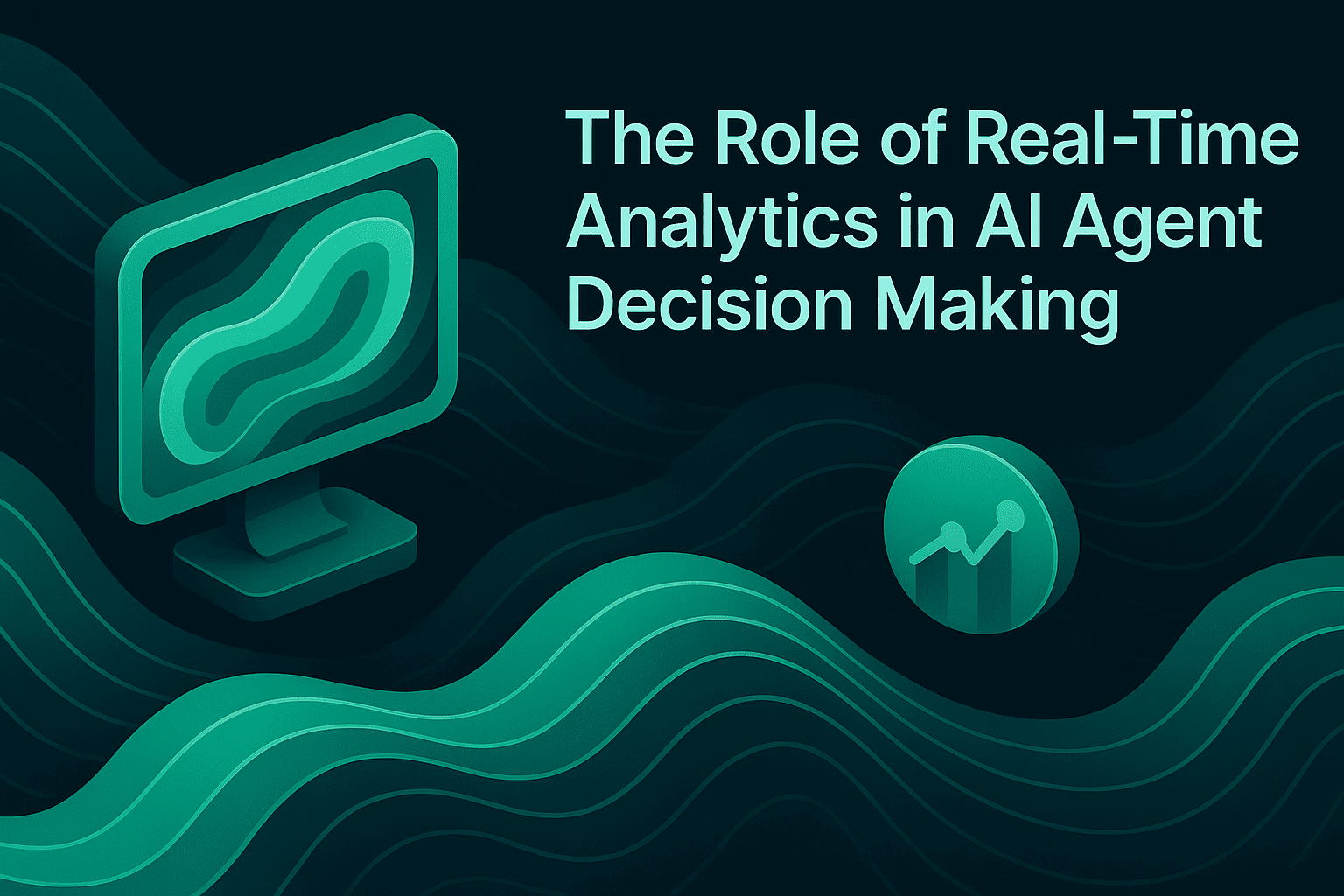Building Multi-Agent AI Systems: A Deep Dive into Agent Collaboration and Communication

Introduction
The evolution of artificial intelligence has moved beyond single-agent architectures into sophisticated multi-agent systems that can decompose complex tasks, collaborate effectively, and achieve outcomes that individual agents struggle to accomplish. While single AI agents powered by large language models have demonstrated remarkable capabilities, they often hit limitations when tackling multi-step workflows that require specialized expertise, parallel processing, or iterative refinement. This comprehensive guide explores how to build two AI agents that communicate and collaborate to complete complex tasks, providing practical code implementations and insights into the fundamental principles of multi-agent development.
Multi-agent AI systems represent a paradigm shift in how we approach artificial intelligence applications. Rather than relying on a monolithic agent to handle every aspect of a task, multi-agent architectures distribute responsibilities across specialized agents, each optimized for specific functions. This approach mirrors human collaborative workflows and unlocks new possibilities for solving intricate problems that demand diverse skill sets.
Understanding Multi-Agent AI Systems: Core Concepts
Multi-agent systems consist of multiple autonomous AI agents that interact, coordinate, and collaborate to achieve shared or individual goals. Each agent in the system possesses its own decision-making capabilities, memory, and communication protocols. The key differentiator lies in how these agents exchange information and coordinate their actions to accomplish tasks that exceed the capabilities of any single agent.
Fundamental Components of Multi-Agent Architectures
A robust multi-agent system comprises several critical components that enable effective collaboration:
Agent Roles and Specialization: Each agent in a multi-agent system typically assumes a specific role with specialized capabilities. For instance, in a research and content generation workflow, one agent might specialize in information retrieval and analysis while another excels at synthesizing findings into coherent narratives. This specialization allows each agent to be optimized for its particular function, leading to higher quality outputs.
Communication Protocols: Agents must establish clear communication channels and message formats to exchange information effectively. These protocols define how agents structure their messages, what information they share, and when they pass control to other agents. Well-designed communication protocols prevent information loss and ensure that context flows smoothly between agents.
State Management: Multi-agent systems require sophisticated state management to track the progress of complex workflows. Each agent needs visibility into the current state of the task, previous actions taken by other agents, and the overall context. This shared state enables agents to make informed decisions and avoid redundant or conflicting actions.
Coordination Mechanisms: Effective coordination determines how agents sequence their actions, resolve conflicts, and adapt to changing conditions. Coordination can be centralized through an orchestrator agent or distributed, where agents negotiate and self-organize their activities.
Single Agent vs Multi-Agent: Fundamental Differences
Understanding the distinctions between single-agent and multi-agent approaches clarifies when and why to adopt multi-agent architectures.
Cognitive Load and Task Complexity
Single agents handle all aspects of a task within a single context window, which can lead to cognitive overload for complex, multi-step workflows. As task complexity increases, single agents may struggle to maintain focus across diverse sub-tasks, leading to decreased performance and higher error rates. The agent must simultaneously manage research, analysis, synthesis, and presentation within one continuous stream of reasoning.
Multi-agent systems distribute cognitive load across specialized agents, each focusing on a well-defined subset of the overall task. This distribution allows each agent to operate within its optimal complexity range, maintaining higher accuracy and coherence. For example, a research agent can focus exclusively on finding and analyzing relevant information without simultaneously worrying about how to format that information into a final document.
Specialization and Optimization
Single agents are generalists by necessity, attempting to perform adequately across all required functions. This generalization often results in compromises where the agent achieves mediocre performance across multiple dimensions rather than excellence in any particular area.
Multi-agent architectures enable specialization, allowing each agent to be optimized for specific tasks through targeted prompt engineering, specialized tools, or fine-tuning. A writing agent can be optimized with detailed style guidelines and formatting instructions, while a separate analysis agent focuses purely on data interpretation and insight extraction.
Failure Modes and Resilience
When a single agent encounters an error or produces low-quality output in any stage of a workflow, the entire task often needs to be restarted from scratch. Single agents lack the ability to isolate failures and recover gracefully from mistakes in specific sub-tasks.
Multi-agent systems offer natural failure isolation. If one agent produces suboptimal output, other agents can provide feedback, request revisions, or take corrective action without necessitating a complete workflow restart. This resilience makes multi-agent systems more robust in production environments where reliability is paramount.
Parallel Execution and Efficiency
Single agents execute tasks sequentially within their context window, limiting throughput for workflows where independent sub-tasks could be parallelized. All processing occurs within a single API call or session, preventing concurrent execution.
Multi-agent systems can execute independent tasks in parallel, significantly reducing total workflow time for suitable problems. Multiple agents can work simultaneously on different aspects of a complex task, aggregating their outputs once all parallel operations complete.
Building a Two-Agent Research and Writing System
To demonstrate multi-agent principles in practice, we will build a system where two specialized agents collaborate on a research and content generation workflow. The Research Agent will focus on gathering and analyzing information, while the Writing Agent will synthesize this information into a structured article.
System Architecture
Our two-agent system follows this workflow:
- The Research Agent receives a topic and conducts comprehensive research
- The Research Agent structures its findings into organized research notes
- The Writing Agent receives the research notes and generates a structured article
- The Writing Agent can request additional research if needed, creating a feedback loop
Implementation Using the OpenAI API
The following implementation uses the OpenAI API to create our multi-agent system. Each agent is implemented as a specialized function with distinct system prompts and capabilities.
import openai
import json
from typing import Dict, List, Any
# Initialize OpenAI client
client = openai.OpenAI(api_key="your-api-key-here")
class ResearchAgent:
"""
Specialized agent for conducting research and information analysis.
Focuses on finding relevant information, extracting key insights,
and structuring findings in a format optimized for content creation.
"""
def __init__(self, model="gpt-4"):
self.model = model
self.system_prompt = """You are a specialized Research Agent focused on
conducting comprehensive research on given topics. Your responsibilities:
1. Identify key concepts and subtopics that need investigation
2. Analyze information critically and extract actionable insights
3. Structure findings in a clear, organized format
4. Highlight important facts, statistics, and expert opinions
5. Note any gaps or areas requiring additional research
Format your output as structured research notes with clear sections:
- Executive Summary
- Key Findings (numbered list)
- Detailed Analysis (organized by subtopic)
- Sources and References
- Recommended Follow-up Questions
"""
def conduct_research(self, topic: str, context: str = "") -> Dict[str, Any]:
"""
Conduct research on the given topic.
Args:
topic: The research topic or question
context: Additional context or constraints for the research
Returns:
Dictionary containing research findings and metadata
"""
messages = [
{"role": "system", "content": self.system_prompt},
{"role": "user", "content": f"Research Topic: {topic}\\n\\nContext: {context}"}
]
response = client.chat.completions.create(
model=self.model,
messages=messages,
temperature=0.7,
max_tokens=2000
)
research_output = response.choices[0].message.content
return {
"topic": topic,
"research_notes": research_output,
"token_usage": response.usage.total_tokens,
"model": self.model
}
def analyze_follow_up(self, initial_research: str, questions: List[str]) -> Dict[str, Any]:
"""
Conduct follow-up research based on specific questions.
Args:
initial_research: The initial research findings
questions: List of follow-up questions to investigate
Returns:
Dictionary containing follow-up research findings
"""
questions_str = "\\n".join([f"{i+1}. {q}" for i, q in enumerate(questions)])
messages = [
{"role": "system", "content": self.system_prompt},
{"role": "user", "content": f"Initial Research:\\n{initial_research}\\n\\n"
f"Follow-up Questions:\\n{questions_str}\\n\\n"
f"Provide targeted research addressing these questions."}
]
response = client.chat.completions.create(
model=self.model,
messages=messages,
temperature=0.7,
max_tokens=1500
)
return {
"follow_up_research": response.choices[0].message.content,
"questions_addressed": questions,
"token_usage": response.usage.total_tokens
}
class WritingAgent:
"""
Specialized agent for synthesizing research into structured content.
Focuses on creating coherent, well-organized articles that effectively
communicate research findings to the target audience.
"""
def __init__(self, model="gpt-4"):
self.model = model
self.system_prompt = """You are a specialized Writing Agent focused on
transforming research findings into high-quality, structured content.
Your responsibilities:
1. Synthesize research notes into coherent narratives
2. Structure content logically with clear sections and flow
3. Write in a clear, professional style appropriate for the audience
4. Incorporate supporting evidence and citations naturally
5. Identify gaps in research that need clarification
When you encounter insufficient information or unclear points, explicitly
state what additional research is needed by the Research Agent.
Format your output as a structured article with:
- Introduction that establishes context and purpose
- Well-organized body sections with clear headings
- Conclusion that synthesizes key insights
- Note any research gaps requiring follow-up
"""
def create_article(self, research_data: Dict[str, Any],
article_requirements: str = "") -> Dict[str, Any]:
"""
Create a structured article from research findings.
Args:
research_data: Dictionary containing research notes and metadata
article_requirements: Specific requirements for the article
Returns:
Dictionary containing the article and any follow-up questions
"""
research_notes = research_data["research_notes"]
messages = [
{"role": "system", "content": self.system_prompt},
{"role": "user", "content": f"Research Notes:\\n{research_notes}\\n\\n"
f"Article Requirements: {article_requirements}\\n\\n"
f"Create a comprehensive article based on these research findings."}
]
response = client.chat.completions.create(
model=self.model,
messages=messages,
temperature=0.7,
max_tokens=2500
)
article_content = response.choices[0].message.content
# Extract any follow-up questions the writing agent identified
follow_up_questions = self._extract_follow_up_questions(article_content)
return {
"article": article_content,
"follow_up_questions": follow_up_questions,
"token_usage": response.usage.total_tokens,
"research_topic": research_data["topic"]
}
def revise_article(self, original_article: str,
additional_research: str) -> Dict[str, Any]:
"""
Revise an article incorporating additional research findings.
Args:
original_article: The initial article draft
additional_research: New research findings to incorporate
Returns:
Dictionary containing the revised article
"""
messages = [
{"role": "system", "content": self.system_prompt},
{"role": "user", "content": f"Original Article:\\n{original_article}\\n\\n"
f"Additional Research:\\n{additional_research}\\n\\n"
f"Revise the article to incorporate this new information."}
]
response = client.chat.completions.create(
model=self.model,
messages=messages,
temperature=0.7,
max_tokens=2500
)
return {
"revised_article": response.choices[0].message.content,
"token_usage": response.usage.total_tokens
}
def _extract_follow_up_questions(self, article_text: str) -> List[str]:
"""
Extract follow-up research questions from article text.
Uses a simple heuristic to identify questions for the Research Agent.
"""
# This is a simplified implementation
# In production, you might use more sophisticated NLP or structured output
questions = []
lines = article_text.split('\\n')
for line in lines:
if 'additional research needed' in line.lower() or \\
'clarification required' in line.lower() or \\
'needs further investigation' in line.lower():
questions.append(line.strip())
return questions
class MultiAgentOrchestrator:
"""
Orchestrates the interaction between Research and Writing agents.
Manages the workflow, handles communication between agents,
and implements the feedback loop for iterative refinement.
"""
def __init__(self, research_agent: ResearchAgent, writing_agent: WritingAgent):
self.research_agent = research_agent
self.writing_agent = writing_agent
self.conversation_history = []
def execute_workflow(self, topic: str,
article_requirements: str = "",
max_iterations: int = 2) -> Dict[str, Any]:
"""
Execute the complete multi-agent workflow.
Args:
topic: The research topic
article_requirements: Specific requirements for the article
max_iterations: Maximum number of research-writing iterations
Returns:
Dictionary containing final article and workflow metadata
"""
print(f"Starting multi-agent workflow for topic: {topic}")
# Step 1: Initial Research
print("\\n[Research Agent] Conducting initial research...")
research_data = self.research_agent.conduct_research(topic)
self.conversation_history.append({
"agent": "Research Agent",
"action": "Initial Research",
"output": research_data
})
# Step 2: Initial Article Creation
print("\\n[Writing Agent] Creating initial article...")
article_data = self.writing_agent.create_article(
research_data,
article_requirements
)
self.conversation_history.append({
"agent": "Writing Agent",
"action": "Initial Article",
"output": article_data
})
# Step 3: Iterative Refinement Loop
iteration = 0
while (article_data["follow_up_questions"] and
iteration < max_iterations):
iteration += 1
print(f"\\n[Iteration {iteration}] Processing follow-up questions...")
# Research Agent addresses follow-up questions
print(f"[Research Agent] Investigating {len(article_data['follow_up_questions'])} questions...")
follow_up_research = self.research_agent.analyze_follow_up(
research_data["research_notes"],
article_data["follow_up_questions"]
)
self.conversation_history.append({
"agent": "Research Agent",
"action": f"Follow-up Research (Iteration {iteration})",
"output": follow_up_research
})
# Writing Agent revises article
print("[Writing Agent] Revising article with new research...")
revision_data = self.writing_agent.revise_article(
article_data["article"],
follow_up_research["follow_up_research"]
)
self.conversation_history.append({
"agent": "Writing Agent",
"action": f"Article Revision (Iteration {iteration})",
"output": revision_data
})
# Update article data for next iteration
article_data["article"] = revision_data["revised_article"]
article_data["follow_up_questions"] = [] # Reset for simplicity
print("\\n[Orchestrator] Workflow complete!")
# Compile final results
total_tokens = sum([
step["output"].get("token_usage", 0)
for step in self.conversation_history
])
return {
"final_article": article_data["article"],
"topic": topic,
"iterations": iteration,
"total_tokens_used": total_tokens,
"conversation_history": self.conversation_history
}
def get_workflow_summary(self) -> str:
"""
Generate a human-readable summary of the workflow execution.
"""
summary = "Multi-Agent Workflow Summary\\n"
summary += "=" * 50 + "\\n\\n"
for i, step in enumerate(self.conversation_history, 1):
summary += f"Step {i}: {step['agent']} - {step['action']}\\n"
tokens = step['output'].get('token_usage', 'N/A')
summary += f" Tokens used: {tokens}\\n\\n"
return summary
# Example Usage
def main():
"""
Demonstrate the multi-agent system in action.
"""
# Initialize agents
research_agent = ResearchAgent(model="gpt-4")
writing_agent = WritingAgent(model="gpt-4")
orchestrator = MultiAgentOrchestrator(research_agent, writing_agent)
# Define the task
topic = "The impact of transformer architectures on natural language processing"
requirements = """
Target audience: Technical practitioners with ML background
Length: 1000-1500 words
Include: Key innovations, practical applications, future directions
Tone: Professional and informative
"""
# Execute the workflow
results = orchestrator.execute_workflow(
topic=topic,
article_requirements=requirements,
max_iterations=2
)
# Display results
print("\\n" + "="*70)
print("FINAL ARTICLE")
print("="*70)
print(results["final_article"])
print("\\n" + "="*70)
print(f"Workflow completed in {results['iterations']} iterations")
print(f"Total tokens used: {results['total_tokens_used']}")
print("\\n" + orchestrator.get_workflow_summary())
if __name__ == "__main__":
main()
Understanding the Implementation
This implementation demonstrates several key multi-agent principles:
Agent Specialization: Each agent has a distinct system prompt that defines its specialized role and output format. The Research Agent focuses on information gathering and analysis, while the Writing Agent excels at synthesis and narrative construction. This specialization allows each agent to be optimized for its specific function without attempting to be a generalist.
Structured Communication: Agents communicate through well-defined data structures (Python dictionaries) that contain not just the primary output but also metadata like token usage and follow-up questions. This structured approach ensures information flows cleanly between agents without context loss.
Feedback Loops: The Writing Agent can identify gaps in the research and request additional information from the Research Agent. This creates an iterative refinement process where the article improves through multiple rounds of research and revision, mimicking how human collaborators work together.
State Management: The MultiAgentOrchestrator maintains a conversation history that tracks every agent action and its outputs. This provides full visibility into the workflow execution and enables debugging, analysis, and potential rollback to earlier states if needed.
Workflow Orchestration: Rather than having agents directly call each other, the orchestrator manages the workflow sequence, enforcing iteration limits and coordinating the flow of information. This centralized orchestration provides control over the multi-agent system's behavior and prevents runaway processes.
Extending the Multi-Agent System
The basic two-agent system can be extended in numerous ways to handle more complex workflows:
Adding Specialized Agents
Introduce additional specialized agents for specific tasks:
- Fact-Checking Agent: Verifies claims and statistics in the article
- SEO Optimization Agent: Enhances content for search engine visibility
- Formatting Agent: Applies specific style guides and formatting rules
- Translation Agent: Adapts content for different languages or locales
Implementing Parallel Execution
For workflows with independent sub-tasks, implement parallel agent execution:
import asyncio
from concurrent.futures import ThreadPoolExecutor
async def parallel_research(topics: List[str], research_agent: ResearchAgent):
"""Execute multiple research tasks in parallel."""
with ThreadPoolExecutor(max_workers=3) as executor:
loop = asyncio.get_event_loop()
tasks = [
loop.run_in_executor(executor, research_agent.conduct_research, topic)
for topic in topics
]
results = await asyncio.gather(*tasks)
return results
Adding Agent Memory
Implement long-term memory for agents to learn from past interactions:
class AgentMemory:
"""Simple memory system for agents to store and retrieve past experiences."""
def __init__(self):
self.experiences = []
def store_experience(self, context: str, action: str, outcome: str):
"""Store a past experience for future reference."""
self.experiences.append({
"context": context,
"action": action,
"outcome": outcome,
"timestamp": datetime.now()
})
def retrieve_similar_experiences(self, current_context: str, k: int = 3):
"""Retrieve past experiences similar to the current context."""
# In production, use vector similarity search
return self.experiences[-k:] # Simple recency-based retrieval
Evaluating Multi-Agent Systems with Maxim AI
While building multi-agent systems opens new possibilities, it also introduces complexity in evaluation and observability. How do you measure the quality of agent collaboration? How do you identify which agent in a multi-step workflow produced suboptimal output? How do you ensure your multi-agent system maintains quality in production?
Maxim AI provides a comprehensive platform for evaluating and monitoring multi-agent systems, addressing the unique challenges these architectures present.
Agent-Level Evaluation
Maxim AI enables evaluation at multiple levels of granularity. You can assess individual agent performance, measure the quality of inter-agent communication, and evaluate the overall workflow outcome. The platform's flexible evaluation framework supports custom evaluators tailored to your specific multi-agent architecture.
For the research and writing system we built, you can create evaluators that measure:
- Research comprehensiveness and accuracy for the Research Agent
- Writing quality and coherence for the Writing Agent
- Communication effectiveness between agents
- Overall workflow success rate and latency
Simulation and Testing
Before deploying multi-agent systems to production, thorough testing across diverse scenarios is critical. Maxim AI's simulation capabilities allow you to test multi-agent workflows against hundreds of scenarios and user personas. You can simulate different research topics, article requirements, and edge cases to identify failure modes and optimize agent behavior.
The simulation environment provides visibility into each agent's decision-making process, showing you exactly where and why workflows succeed or fail. This granular insight enables rapid iteration and improvement of your multi-agent architecture.
Production Observability
Once deployed, multi-agent systems require continuous monitoring to maintain quality. Maxim AI's observability suite provides real-time tracking of multi-agent workflows in production, enabling you to:
- Monitor individual agent performance and latency
- Track the flow of information between agents
- Detect quality degradation in specific workflow stages
- Set up alerts for anomalous agent behavior
- Trace issues back to specific agent interactions
The platform's distributed tracing capabilities are particularly valuable for multi-agent systems, providing end-to-end visibility into complex workflows spanning multiple agent invocations.
Continuous Improvement
Maxim AI's data engine enables continuous improvement of multi-agent systems by curating production data for evaluation and fine-tuning. You can identify patterns in agent failures, collect human feedback on workflow outputs, and use this data to refine agent prompts, add guardrails, or retrain models.
The platform supports human-in-the-loop evaluation workflows, allowing domain experts to review agent outputs and provide feedback that directly improves system quality. This feedback loop is essential for maintaining high-quality multi-agent systems as requirements evolve and edge cases emerge.
Conclusion
Multi-agent AI systems represent a significant advancement in how we architect artificial intelligence applications. By distributing complex tasks across specialized agents that communicate and collaborate, we can build systems that exceed the capabilities of monolithic single-agent approaches. The research and writing system demonstrated in this guide illustrates the core principles of multi-agent development: specialization, structured communication, feedback loops, and orchestrated workflows.
As you scale multi-agent systems from prototypes to production, evaluation and observability become paramount. Maxim AI provides the comprehensive toolkit needed to measure quality, identify issues, and continuously improve multi-agent architectures. From simulation and testing to production monitoring and data curation, Maxim AI supports the complete lifecycle of multi-agent development.
Ready to build and evaluate production-grade multi-agent systems? Start your free trial with Maxim AI and experience the power of comprehensive AI evaluation and observability. Or schedule a demo to see how Maxim AI can accelerate your multi-agent development workflow.


